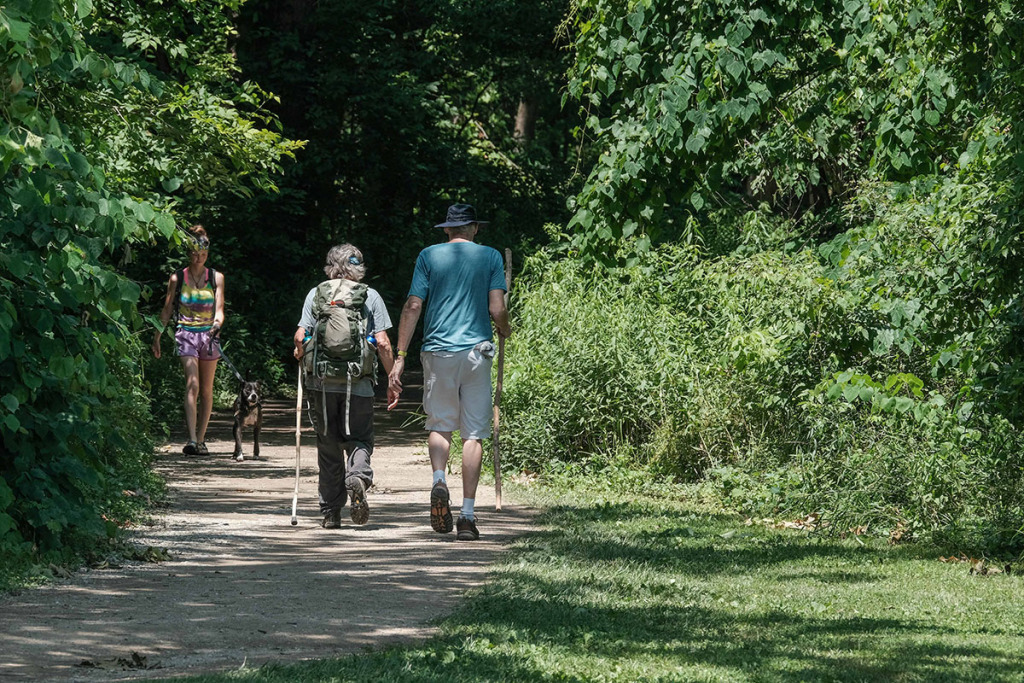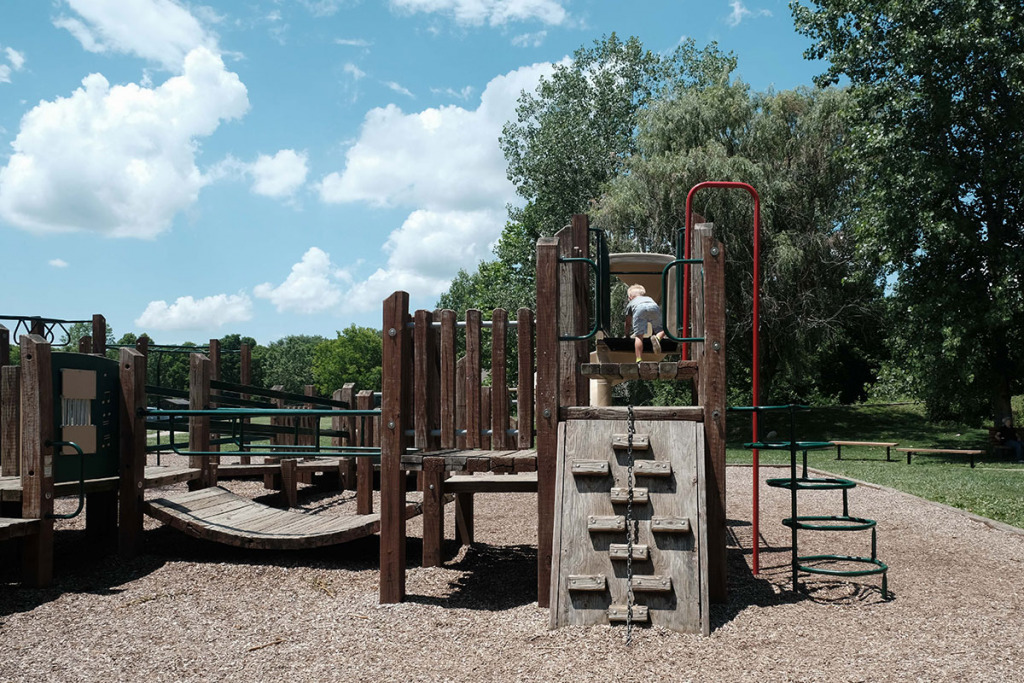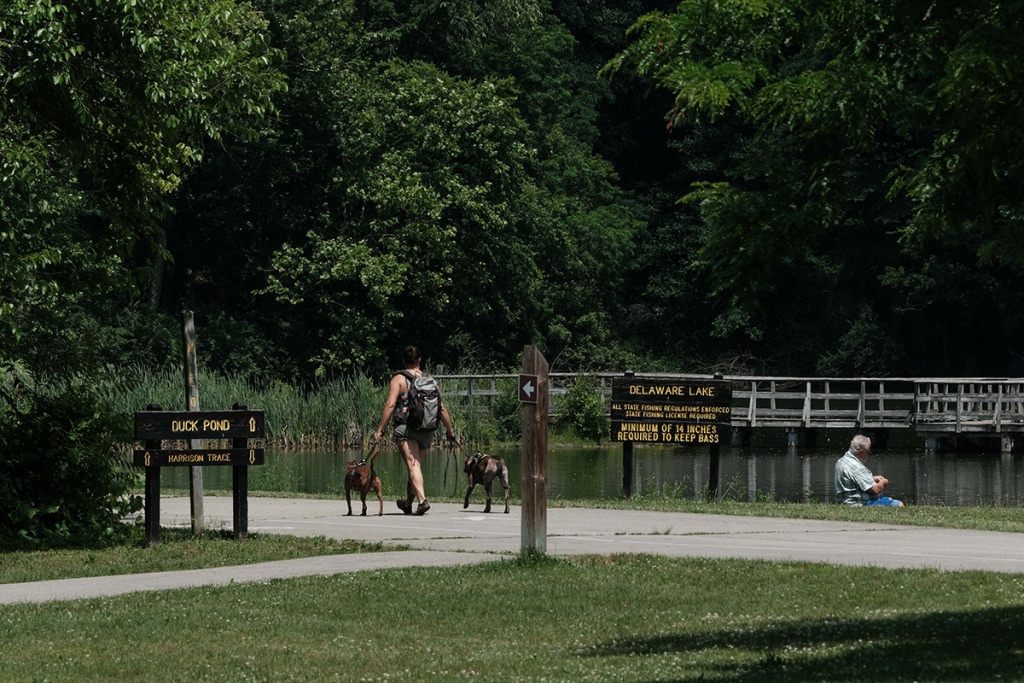Subscriber Benefit
As a subscriber you can listen to articles at work, in the car, or while you work out. Subscribe NowIndiana’s state parks, forests and trails—long starving for cash and maintenance—will receive a $57 million boost this year that includes money for improvements at nearly 50 state properties and the first new state park inn in more than 80 years.
The State Budget Committee recently released $5 million to start designs for an inn at Potato Creek State Park near South Bend and another $52.2 million for improvements at multiple Department of Natural Resources properties—from trails, playgrounds and the dam at Fort Harrison State Park to the inn, restrooms, playgrounds and trails at Spring Mill State Park.
“DNR, along with many other state agencies, in candor, has probably never fully recovered from the 2008 recession,” said Mike Smith, Department of Natural Resources deputy director and chief financial officer. “Some programs were reduced and cut immediately. We’re trying to catch up a little bit.”
Money for general maintenance and improvements was approved from a $150 million fund the General Assembly added to the 2020-2021 budget during the 2019 legislative session for deferred maintenance projects across the state.
Money for the inn comes from the $2 billion revenue surplus the state found itself with two weeks before the end of the legislative session this year. With that money, the General Assembly set aside $550 million for certain capital projects.
Potato Creek’s inn is one of nine capital projects throughout state government eligible for the $550 million, which will be released on a first-come-first-served basis. Also among them is a new lodge at Prophetstown State Park, though that money has not yet been released.
DNR has pushed the state for 20 years for money for a new state park inn. Of Indiana’s 24 state parks, seven have inns. The most recent was built in 1939, at Spring Mill State Park.
This will be the fourth time around for the inn proposal at Potato Creek State Park, which is one of Indiana’s most visited state parks. Plans for the inn were presented in 2001, 2005 and then in 2015 for Indiana’s bicentennial, Smith said.
None of those proposals got very far. The General Assembly did allocate $24 million for an inn in 2015, but the project was scrapped when Gov. Eric Holcomb took office in 2017.
“It never seemed to garner any traction, i.e., funding,” Smith said.
Those prospects changed, though, when Indiana found itself with $2 billion in extra revenue in the last two weeks of the legislative session this year from federal pandemic relief and state tax revenue.
Sen. Mike Bohacek, R-Michiana Shores, advocated to add the Potato Creek inn to the list of capital projects that could pull from the $550 million set aside. The state park is in his district, and an inn would bring needed tourism and economic development to the area, he said, particularly to the town of North Liberty, just a couple of miles west of the park entrance.
“The inns around the state are actually quite profitable,” Bohacek said.
Economic draw
Indiana’s state park inn system is one of the largest in the country, said Terry Coleman, director of Indiana State Parks. Adding an inn in northern Indiana to that successful system is a welcome endeavor, he said.
“It is something we’re really excited and anxious about. These inns are really important to our state,” Coleman said.
The $5 million allocated from the State Budget Committee last month is the first tangible money provided to start the construction process. The Department of Natural Resources will use it to consult with a design firm to create renderings and layouts and then return to the budget committee with a request to cover the project’s full cost.
Smith hopes to open the inn by 2023. The tentative plan is for it to house more than 100 rooms, banquet and meeting spaces, and an indoor aquatics center, he said.
North Liberty lies just 15 miles southwest of South Bend and has just over 1,800 residents. It boasts a small downtown area with a few local shops, a bakery, a pizza place and a bowling alley. The residents of North Liberty see travelers drive through day after day on their way to Potato Creek State Park. Some occasionally stop to check out the downtown.
Clerk-treasurer Vicki Kitchen said an inn at the park would increase tourism and spur economic development.
“It will help everybody out. It’ll be jobs for our local community, as well as our business owners in downtown North Liberty,” Kitchen said.
North Liberty lacks some amenities, such as a grocery store, but an inn could encourage tourists to stick around a few days and boost local business, Bohacek said.
“Something like this would absolutely help bring in new opportunities for restaurants and grocery stores,” he said. “You get into some of these smaller towns, there’s just not a lot of resources because the population won’t support it. But with more tourism, it will open those opportunities.”
Kitchen said North Liberty has been hoping for years for an inn at Potato Creek, and this time the idea seems like more of a reality. The town plans to extend utility services out to the inn.
“We really think it will come to fruition this time,” she said.
The General Assembly added $150 million to the 2020-2021 budget for deferred maintenance with the intention of at least $100 million going to DNR to start overdue upkeep of its more than 100 properties, Smith said.
The department operates a variety of state properties, ranging from state parks and forests to wildlife preserves and beaches. The budget committee allocated $30 million of the deferred maintenance funding to DNR last year for various projects, which included replacing several vault toilets (waterless units that seal and store waste underground) and a few pool upgrades.
This next round allocated $52.2 million—the biggest chunk in capital-project funding the department has seen in years, Smith said. This money will resurface bike, walking and horse trails across 20 sites; renovate several rooms and HVAC systems in all seven state-park inns; and upgrade more than 40 playgrounds to comply with the Americans with Disabilities Act.
“Our goal is to have at least one ADA-accessible playground on every property,” Smith said.
At Fort Harrison State Park in Lawrence, on Indianapolis’ northeast side, $120,000 will be spent to resurface Fall Creek Trail and $125,000 will be used to update three playgrounds. The dam at Delaware Lake will also be rehabilitated to prevent erosion and improve capacity, costing about $250,000.
Coleman said Fall Creek Trail is the park’s most popular trail, so over the years certain parts have become eroded.
The state parks division has more than 800 miles of trails combined, and keeping up with maintenance costs is a challenge, Coleman said.
Spring Mill State Park near Bedford has the most work lined up, with eight projects to update playgrounds, trails, a dam and restrooms. Its 82-year-old inn is expected to receive the bulk of the planned room and HVAC system renovations, Smith said.
More than half of DNR’s operating budget is self-sufficient, funded by user fees. In 2020, state parks saw a record-breaking revenue of $40 million because of the public’s increased interest in outdoor activities during the height of the pandemic, Smith said.
This $82 million from the state in the last two years is overdue for the department’s aging properties, he said. If needed, DNR could return to the State Budget Committee next year to ask for the remaining $18 million in the deferred maintenance budget.
“We have over 100 properties statewide, with numerous buildings, trails and playgrounds,” Smith said. “We’re just trying to bring them up to par.”•
Please enable JavaScript to view this content.








Excellent! Money well-spent.
Agree
This is great news. No one can (or should) complain about money spent to preserve, upgrade and maintain one of our state’s most precious assets–our state parks!
Now….could someone PLEASE invest some money in the rest areas along our Indiana Interstate Highway System? As visitors from other parts of our country, along with residents traveling to state parks and other destinations, I have to say these are beyond embarrassing! While our surrounding states seem to understand that these important way stations that dot our highways are, in and of themselves, indicators of our Hoosier pride. In their current state, many would likely not pass a Department of Health review!
Again…great news on money well spent for our parks! Looking forward to the improvements!
I couldn’t agree more on the rest stops. Just yesterday, I had to drive to Chicago and back, and the rest stop I used both north and southbound on I-65 were in deplorable condition, fly-ridden and had a disgusting urine stench in them. Not exactly a show of good show Hoosier hospitality and an embarrassment.
The map only has 1 color of dots.
I was about to say the same thing.
If you click on the dot, it shows how funds have been allocated for various projects, corresponding with the various colors/categories.